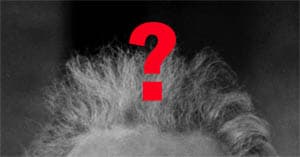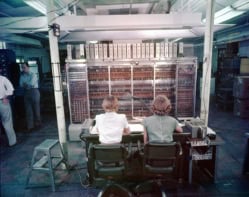Test your knowledge of the world’s greatest physicist

Note added 1 April 2005: The winner of the quiz below was Diego Castedo of the Department of Physics at the Universidad Mayor de San Andrés in La Paz, Bolivia. He got all but two of the questions right, including the fact that Einstein was not left-handed, was not a vegetarian (except in the last year of his life), and did not approve the patent for the Toblerone chocolate bar while working in the Swiss patent office; the latter story appears to be an urban myth. The correct answers are given at the bottom of this page.
Facts and figures
All the answers to the following questions appear somewhere in this issue.
1. From which university did Einstein receive his PhD?
2. How many children did Einstein have with his first wife Mileva?
3. Which two musical instruments did Einstein enjoy playing?
4. How many references did Einstein include in his first 1905 paper on special relativity?
5. What part of Einstein’s body was not cremated after he died?
6. Which university currently owns Einstein’s papers?
Who said that?
7. Who told Einstein to “stop telling God what to do”? (A. Niels Bohr B. Paul Dirac C. Werner Heisenberg)
8. When asked if it was true that only three people in the world understood Einstein’s theory of relativity, who is reported to have said, “I’m just trying to think of who the third person might be”. (A. Arthur Eddington B. Edwin Hubble C. Max Planck)
9. Who declared during a colloquium by Einstein, “You know, what Mr Einstein said is not so stupid!”. (A. Paul Ehrenfest B. Wolfgang Pauli C. Erwin Schrödinger)
10. Shortly after Einstein first became known in the physics community, who said, “I only hope and wish that fame does not exert a detrimental influence on his human side”. (A. His friend Michele Besso B. His sister Maja C. His first wife Mileva Maric’)
11. Who declared in 1966 that Einstein “was almost wholly without sophistication and wholly without worldliness”? (A. Robert Oppenheimer B. I I Rabi C. Victor Weisskopf)
12. Who said that Einstein’s work on general relativity was “one of the greatest – perhaps the greatest – achievements in the history of human thought”? (A. W H Bragg B. Ernest Rutherford C. J J Thomson)
Mix and match
About whom did Einstein say the following? Match the six quotes to the six people.
13. “He was one of the finest people I have ever known…but he really did not understand physics.”
14. “[He] was as good a scholar of mechanics as he was a deplorable philosopher.”
15. “She has a sparkling intelligence, but despite her passionate nature she is not attractive enough to present a danger to anyone.”
16. “He is truly a man of genius…I have full confidence in his way of thinking.”
17. “She is an unfriendly, humourless creature who gets nothing out of life.”
18. “He was one of my dearest acquaintances, a true saint, and talented besides.”
A. Niels Bohr
B. Marie Curie
C. Paul Langevin
D. Ernst Mach
E. Mileva Maric’
F. Max Planck
True or false?
19. The FBI kept a file on Einstein.
20. Einstein was left-handed.
21. Einstein was a vegetarian.
22. Einstein approved the patent for the Toblerone chocolate bar while working in the Swiss patent office.
23. Einstein won the Nobel prize for his work on special relativity.
24. Einstein worked on the Manhattan nuclear-bomb project for the Allies.
Answers
1 Einstein’s PhD was from the University of Zurich.
2 His first wife Mileva had three children.
3 The two instruments he could play were the violin and the piano.
4 There were no references in Einstein’s first 1905 paper on special relativity.
5 Einstein’s brain was not cremated after his death.
6 His papers are currently owned by the Hebrew University of Jerusalem.
7 A (Niels Bohr)
8 A (Arthur Eddington)
9 B (Wolfgang Pauli)
10 C (Mileva Marić)
11 A (Robert Oppenheimer)
12 C (J J Thomson)
13 F (Max Planck)
14 D (Ernst Mach)
15 B (Marie Curie)
16 A (Niels Bohr)
17 E (Mileva Marić)
18 C (Paul Langevin)
19 True
20 False
21 False
22 False
23 False
24 False



